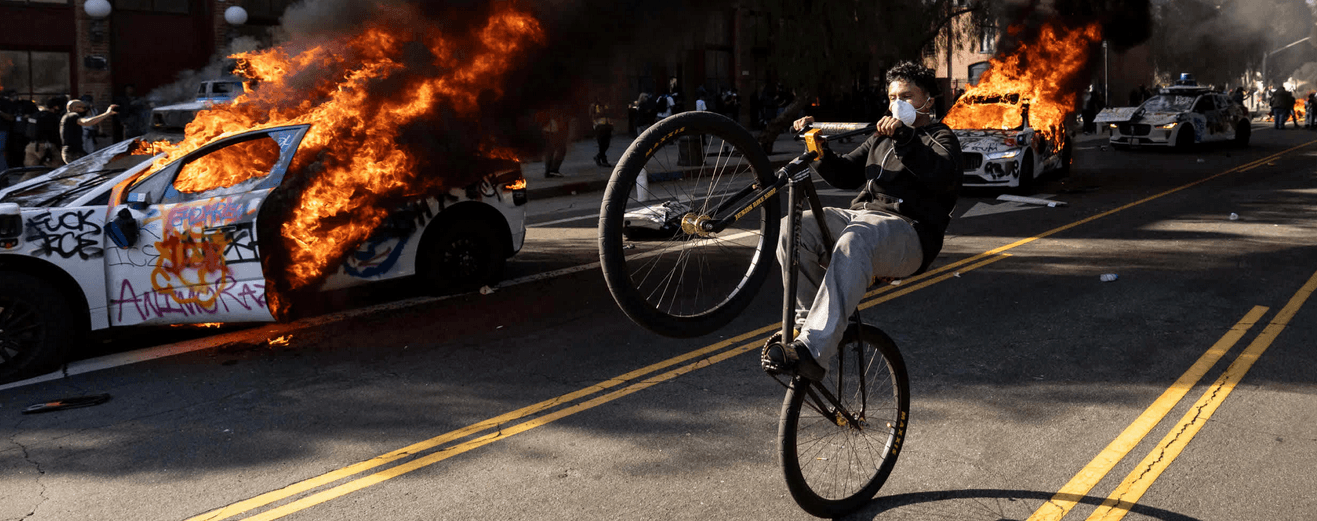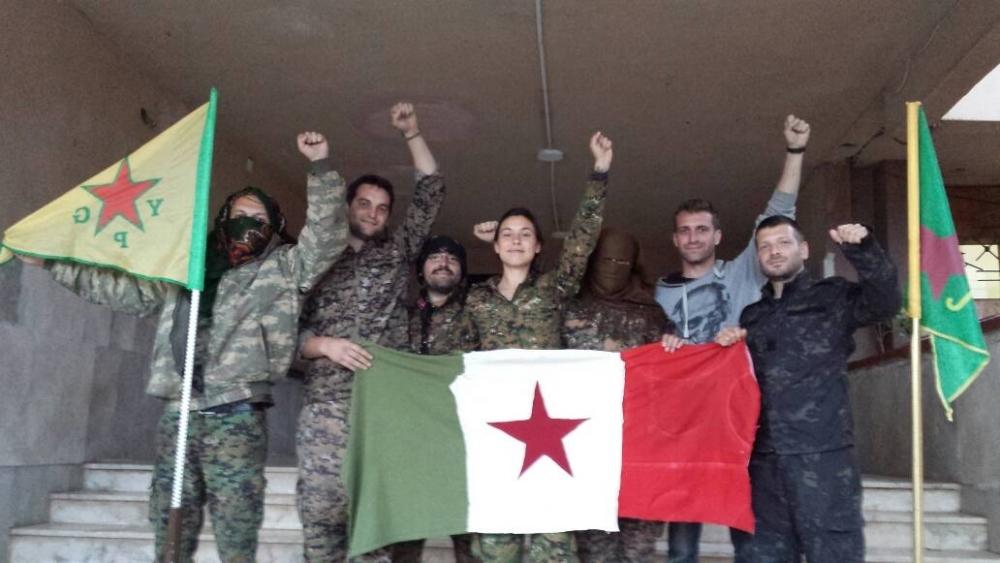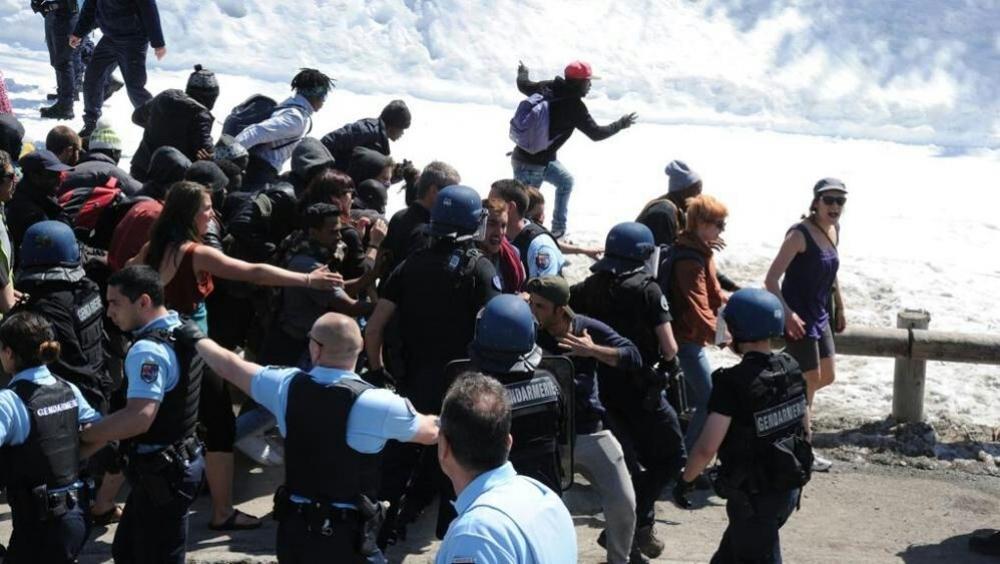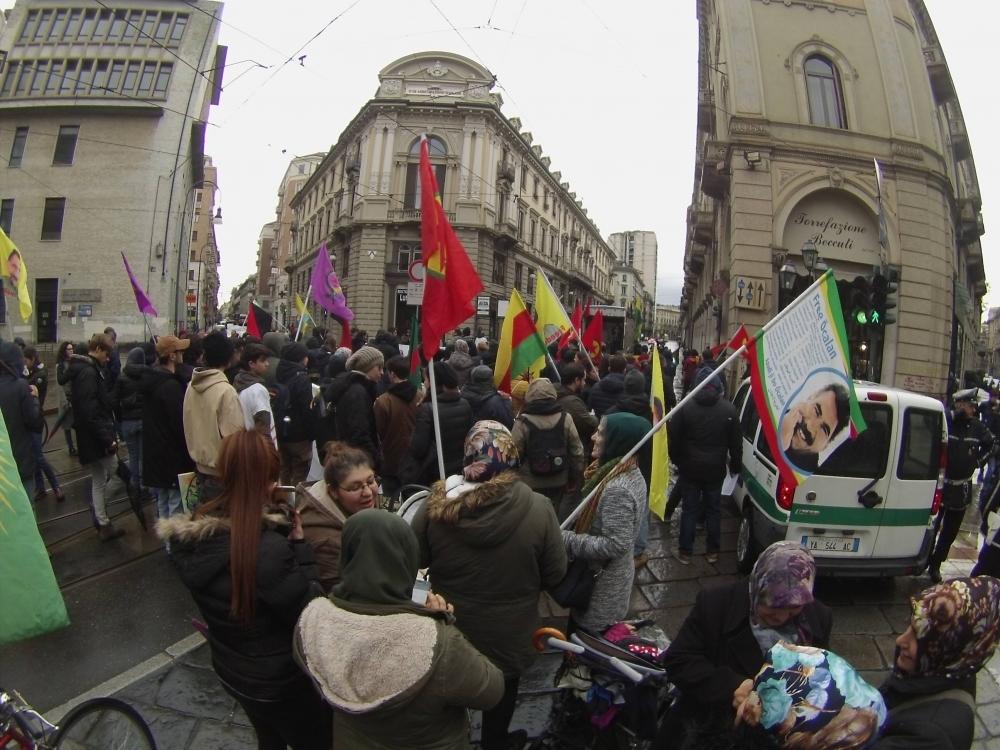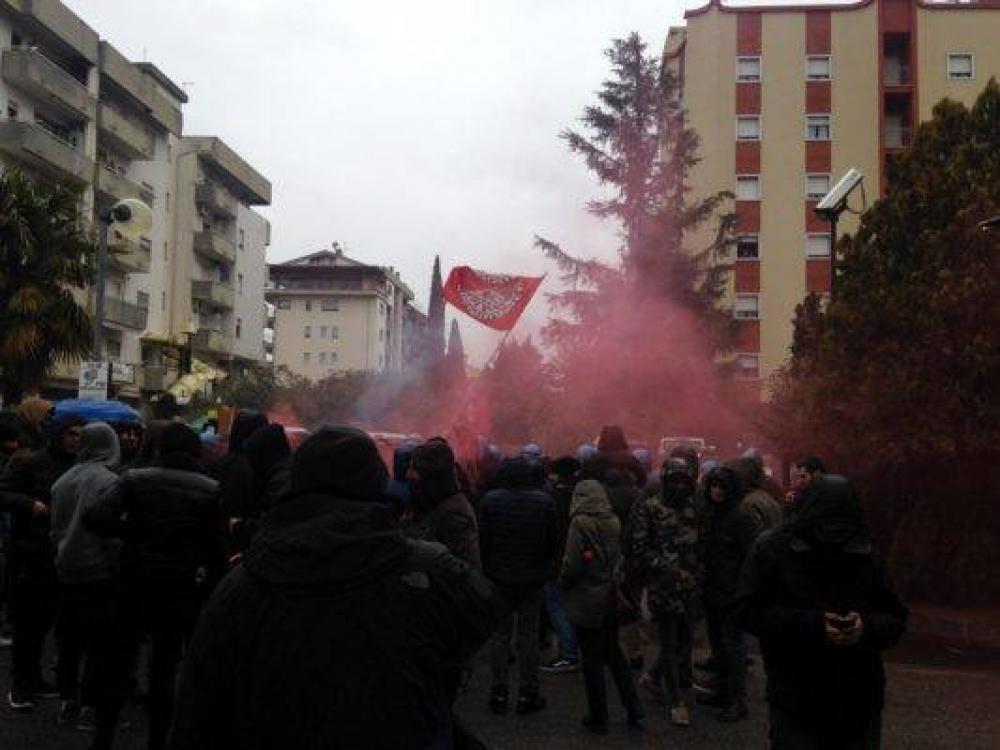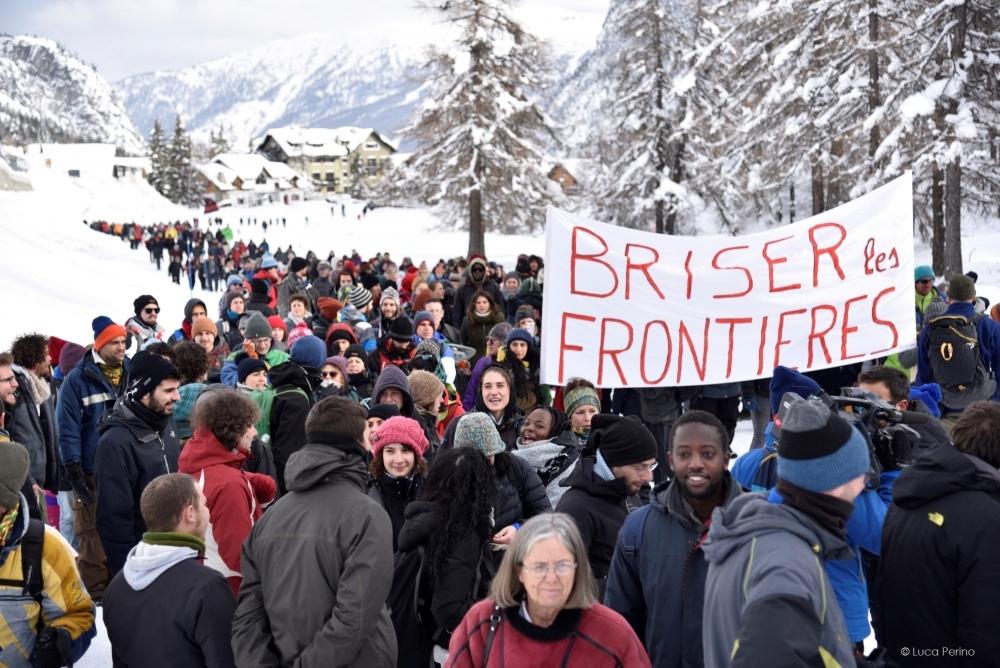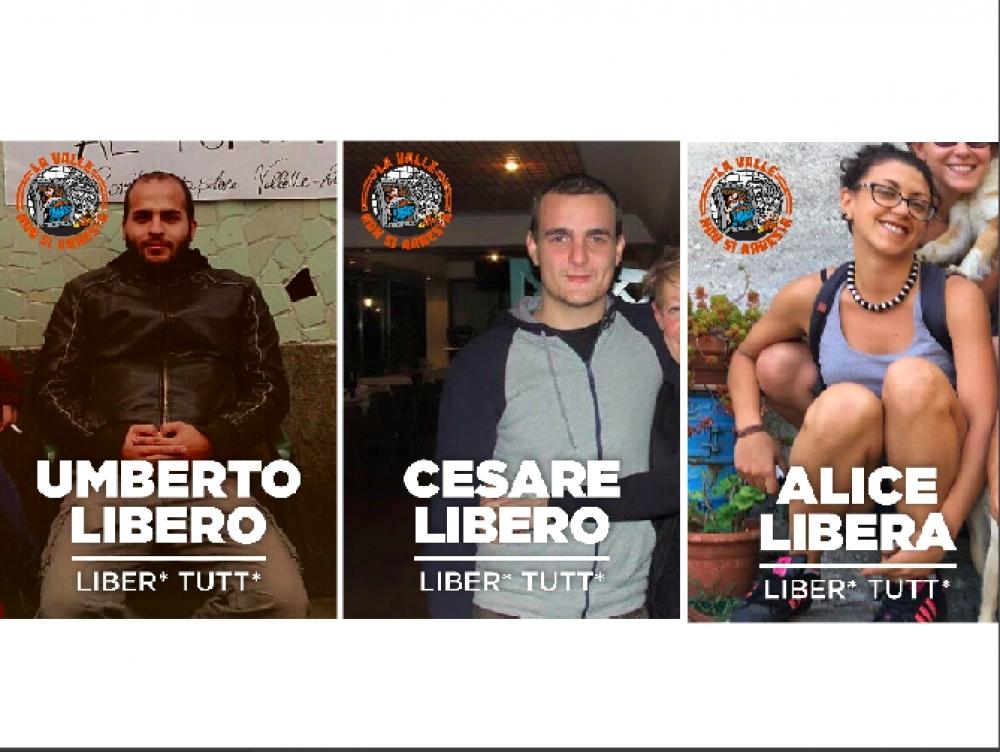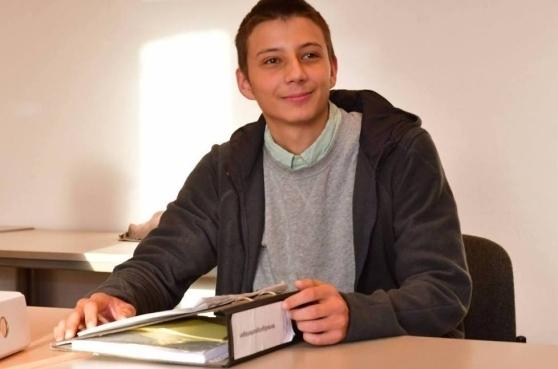#6D, the next leg against the crisis
The jolt in Europe of the 14th of November served to warm up an autumn that foreshadowed itself as once again restrained by the breaks applied from the government of the professors. Yet the crisis, in all of its ambivalence, is the bringer of a steady power of transformation and unpredictability; it is a possibility for rebellion whose harnessing must be understood. In the heat of struggle we believe that this reasoning should be brought back, shared and contextualised in the context of the phase we are currently going through. Nothing is over, nor concluded, everything is to gain. In the Piigs’ Europe the flag which was raised on November 14 was one of refusal, of conflict, of a No that we must – starting from our territories, from the occupied schools, from the sizzling faculties, from the suburban bars and parks – ensure become a central component.
Already with the statement ‘Knowledge in and against the crisis’, we hypothesized a possible political space to be opened, to be built, in the time of austerity. The crumbling of the institutions, primary or otherwise, which are by now doomed to default, confirm a tendency on which to keep reflecting, but, above all, a fault in which to insert ourselves in order to force them to surrender. The total incapacity with which the politics of the palace attempted to manage the outburst of November 14 was proof of this, and was doubly confirmed to us by the embarassed silence or habitual condemnation of the party bureaucrats, who entrusted the task of governance through police batons to the police forces and their commanders. From minister Cancellieri [1] to the Roman prefect Pecoraro, from minister Severino [2] to the Turinese commissioner Faraoni: stupidity in charge. Whoever thinks that the many No’s could be managed by exerting control over the squares is wrong and deluded; neither the media sham, nor the crap about ricocheting tear gas canisters or the threat of metropolitan DASPOs [3] is enough.
The generation that is filling up streets and squares was not afraid yesterday, nor will it be tomorrow: when we will be back beneath those government offices. The wonderful marches of November 14 and 24 are the foundation of the base from which to restart, to conquer the time of crisis, to live again the rush of adrenalin of the marches, the occupations and the pickets of whoever shouts a strong and collective No. The squares of 14N caused their power to emerge into a new composition, transformed by crisis, that in the social negation of welfare and future installs a necessity of conflict exceeding the occupied schools and the sizzling faculties, a composition that we must know and investigate and spread, not for sociological needs but for the sake of the outcome of the clash. If until today the fundamental energy came from the youthful subjectivities who crowd the occupied schools and student marches, from tomorrow the priority will become not only a genuine support of this generational protagonism, but also a political commitment to dare to socially generalise the strike.
The construction of our strike, of a social strike, cannot but start with the widespread mobilization of secondary schools, which still present themselves as the driving subjective component of the Italian autumn, right from its beginning (the October the 5th of the self-organised students, announced this summer in the Susa Valley[4]) until now; but it must necessarily be built also in the grey areas of a date like the 14N: the universities and the faculty student subjectivities that brood with indignation, that harbour a claim of political character, but that didn’t activate by the European deadline. Clearly the university students, out of their political composition, didn’t spot – as the secondary school students did – a potential inherent in the events of November that will become the challenge of this phase of struggle against crisis and austerity. To start again from here, from the limits of weeks however wonderful, allows us to keep working politically on that dimension of social networks that will build in our territories, to weave relations and links starting from schools and faculties, to organize the premises of a social strike which will build and extend to every corner of the city. The rage and the discontent against the governance of crisis, under the command of crumbling institutons shows up in our universities almost as a litmus test of the Italian impasse, crossed by many local and particular struggles, but suffering a lack of a common and unifying reason of social and mass-scale mobilization.
This is the collective task to assume, first of all in the faculties in agitation against the university in crisis, towards the next date of national mobilization, called up by the occupied schools, which immediately becomes opportunity and occasion for generalization: December 6. From a student, social and political point of view, even the strike scheduled for the end of autumn by the FIOM [5] (solitary and feeble resistance to the plan of Marchionne & co.) must exceed the weak and trade union based dimension of its genesis, as done on November 14 in every city during the CGIL’s [6] bogus general strike. The organizational framework of the trade union, beside its more or less yellowish colour[7], shows itself to be poor and ineffective, often also as a tool of governance for the maintenance of social peace.
The bipolarity of the 14N squares proved it once again: in numbers, in practice and in their different strengths. We think that the strike of December 6 should be assumed from another perspective: non only, and in the end in what must be necessarily weakly, in solidarity with the FIOM mobilization, but above all as another interval in and against crisis, to return beneath those government offices proclaimed as ‘sacred places of democracy’ [8], yet representing only the corruption of a system.
See you in the streets, reverse the crisis!
Antagonist students of the rebel faculties
towards December 6 strike
[1] Minister of Interior
[2] Minister of Justice
[3] Restrictive judicial measures until now used against soccer and other sports’ supporters (i.e. prohibition to enter stadiums and attend to sport events) whose extension to political demonstrations is now mulled over by the government.
[4] The homeland of the NO TAV (High-speed railway) movement, a place of meeting and struggle for different Italian subjectivities – in which the secondary school students hosted a camp last summer.
[5] The Federazione Operai Impiegati Metallurgici (FIOM) (Federation of Metalwork and Mechanical Engineering Workers and Employees) is a trade union associated with the left-leaning (but still mainstream and bureaucratic) Confederazione Generale Italiana del Lavoro (CGIL) (Italian General Confederation of Work) albeit more radical. After being notably supportive of social struggles during the late Berlusconi government, it recently turned back to coordinate itself much more with the CGIL.
[6] The main Italian trade union, historically close to the Communist Party and now with its centre-left successors. The main body of CGIL itself, as the other unions addressed to in the document, is to be thought of as a bureaucratic, hierachical trade union, ready to work with state and capitalist institutions – thus very different from forms of rank-and-file unionism closer to various areas of the Italian autonomous movement.
[7] In Italy unions which have historically sided with the boss are called ‘yellow unions’.
[8] As the aforementioned Roman prefect Pecoraro said
Ti è piaciuto questo articolo? Infoaut è un network indipendente che si basa sul lavoro volontario e militante di molte persone. Puoi darci una mano diffondendo i nostri articoli, approfondimenti e reportage ad un pubblico il più vasto possibile e supportarci iscrivendoti al nostro canale telegram, o seguendo le nostre pagine social di facebook, instagram e youtube.



